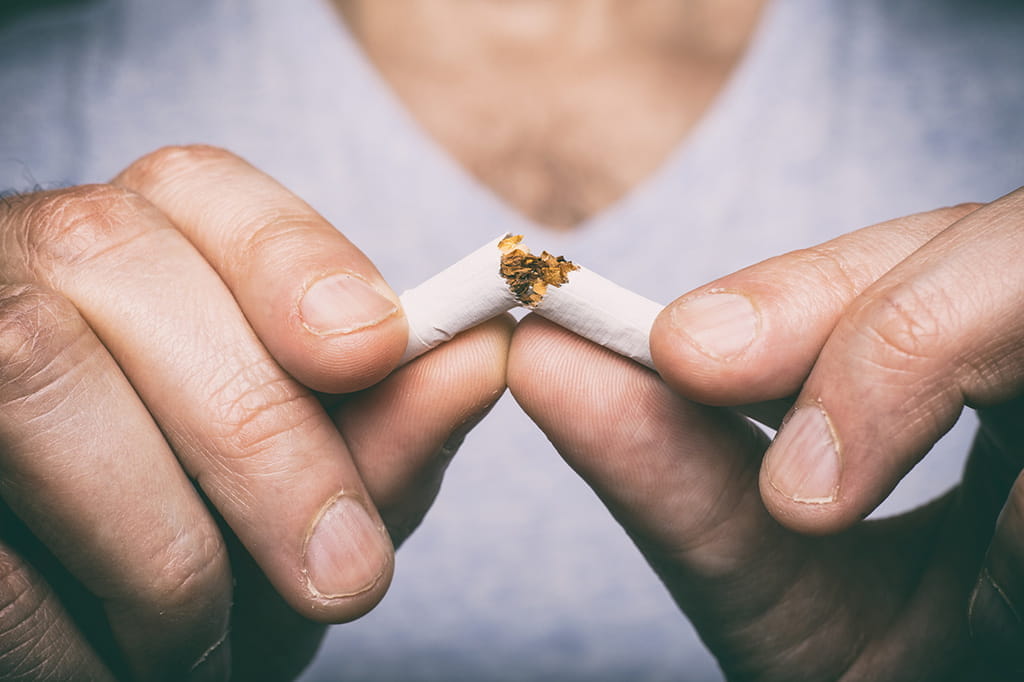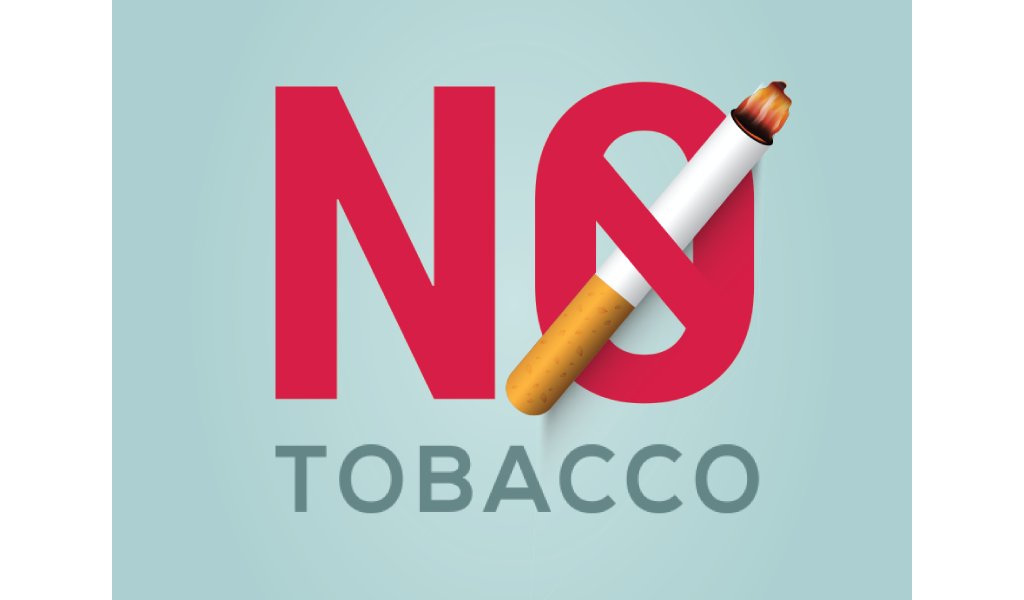
The science behind tobacco craving & strategies that help with smoking cessation
It's well known that tobacco smoking is harmful to our health. According to studies, tobacco is responsible for one-third of all cancers, especially lung cancer.
Moreover, smoking accounts for various conditions or complications such as lung cancer, chronic respiratory diseases, cerebrovascular disease, heart disease, stroke and other chronic diseases.
To quit smoking for good is always the best option for our health. However, kicking the habit could crash down on us as our body gets used to regular nicotine intake.
Here we are going to discuss what one needs to experience when attempting to quit and the tips and options that can help resist tobacco cravings.
Before diving into our topic, it is necessary for us to have a better understanding of the science behind tobacco cravings.
How do tobacco cigarettes get smokers addicted?
When using a tobacco cigarette, one breathes in the nicotine in his or her lung, a highly addictive substance that exists in tobacco.
The nicotine rapidly reaches the brain through the bloodstream and activates the reward system of the brain, leading to a surge of dopamine.
Dopamine is a neurotransmitter that creates feelings of pleasure and reward so that it leads smokers to the cycle of urging nicotine boosts. This also means they get addicted to nicotine.
Frequent nicotine intake causes changes in the balance of chemical messengers in the brain. When stopping smoking abruptly, the chemical balance is disrupted so that the body has to adapt to not having nicotine, which causes a series of physical or psychological reactions or withdrawal symptoms.
The withdrawal symptoms include nicotine craving, restlessness, anxiety, irritability, hunger pangs, difficulty focusing, trouble sleeping, and so on, among which nicotine craving is considered as the most typical feature and the biggest barrier to smoking cessation.
Nicotine craving occurs from your first quit day, or to be exact, the first few hours after you smoke your last cigarette and reaches peak levels at the first few days. Gradually, it decreases over the following few weeks until the finally it is gone completely. The quitting process might last for a few weeks or months, or even longer, depending on the individual.
To quit smoking simply with willpower alone could be very daunting and tend to cause a relapse. To enhance the chance of smoking cessation, you'd better seek some strategies or support.
Five tips for coping with nicotine cravings
There are a variety of methods available to tackle nicotine dependence. Below are five tips that can be helpful when nicotine cravings hit.
1. Distract yourself from other activities. Just keep yourself busy with other activities. For instance, you can do some physical activities such as pushups, deep knee bends and hiking, or engage in something you enjoy, such as watching movies, reading books or paintings, etc. In all, try to divert your attention from smoking.
2. List the reasons why you choose to quit. For example, the reasons can be to maintain your health, keep your loved ones away from secondhand smoke, save money, etc. Just write them down, and they can serve as a motivation to help you overcome the urge to smoke.
3. Keep away from triggering situations. Studies show that daily routines, habits or situational factors of smoking can also cause smokers to crave for nicotine. For example, you might get used to smoking after each meal, or when you stay with your friends who also smoke, when you feel tired or stressed, or when you are in a bar, etc. These routines can trigger your urge to smoke. In this case, you need to avoid these triggering situations, such as keeping away from friends who smoke, not going to places that make you crave to smoke and so on.
4. Don't give yourself any chances to try "only one". While nicotine craving is hard to resist, it is temporary and only lasts a matter of 5-10 minutes each time and then it passes. Tell yourself you can tame your cravings for nicotine, and don't allow yourself to start with one, even if you have a strong urge to smoke. You will possibly return to smoking if you do that. Remember that every craving you overcome means you are one more step closer to the success of quitting.
5. Have some snacks, drinks or food that help reduce cravings. A variety of snacks, fruits or drinks are reported to be helpful in dealing with nicotine cravings. For example, you can chew some gum, sugar-free hard candy, nuts or baby carrots when a nicotine craving hits, or drink some ginseng tea, which can lower your craving by reducing the acts of dopamine. Besides milk and other dairy items, fruits and vegetables are also considered to be good for quitting smoking.
In addition to the tips mentioned above, there are many other options that can help with smoking cessation. One of the most popular choices is non-combustible nicotine products or tobacco substitutes.
Non-combustible nicotine products
Though nicotine is the main substance that gets smokers addicted, it is not recognized as a carcinogenic substance and the leading cause of tobacco-related diseases.
It is the tobacco smoke and its byproducts, such as tar and ash, rather than nicotine, that account for the harm of smoking. This is where non-combustible nicotine products come in to help smokers to combat nicotine cravings when they attempt to quit smoking.
Non-combustible nicotine products are generally referred to as those products that deliver nicotine without burning. Some of the popular non-combustible nicotine products include e-cigarettes, heated tobacco products, herbal heat sticks, tobacco-free oral nicotine, NRT smoking cessation aids, and so on.
Among these products, the NRT(nicotine replacement therapy) smoking cessation aids are licensed medicines that can ease cravings and physical withdrawal symptoms of smokers.
The NRT products work by delivering a steady and just enough dose of nicotine to users so that they can get users less addicted and help them gradually cut out nicotine.
These products are popularly known as gum, skin patches, lozenges, nasal spray and inhalers, among which the gum, skin patches and lozenges can be purchased over-the-counter, while the rest two are prescription only.
While the NRT products are effective tools to deal with nicotine cravings, there are smokers who don't want to use medicines and who enjoy smoking-like rituals.
Don't stress. There are other options to choose from. For example, herbal heat sticks can be another good choice.
Herbal heat sticks offer users nicotine throat hits and sensations similar to heated tobacco sticks, while they don't contain tobacco.
These products are usually considered as a heated tobacco alternative since they replicate the look and feel of the latter and are compatible with most heated tobacco heating devices, such as IQOS.
Herbal heat sticks are heated to a temperature at around 350°C to produce an aerosol that users inhale. No combustion takes place when they are in use. Hence, they keep users away from harmful tobacco smoke.
Besides, herbal heat sticks bring enjoyable experiences to users, as they are free from the harsh smell and unpleasant aftertaste that are associated with tobacco products. Moreover, they are available in a wide range of flavors to meet everyone's needs.
Some of the leading herbal heat stick brands include NEAFS, Unicco, CCOBATO and so on. NEAFS is the only one that has passed the MHRA in the UK. NEAFS has been well recognized in recent years, especially in European regions. NEAFS sticks use high-quality tea as its base, which are incorporated into nicotine, natural herbs, vegetable glycerin, propylene glycol and flavorings to offer an authentic nicotine hit and smoking-like sensations.
Each NEAFS stick contains 1.5% nicotine in strength, which is lower than traditional cigarettes, so on one hand, they can make users less addicted to nicotine and on the other hand, ease their urge to smoke with a particular dose of nicotine supply.
NEAFS sticks come with rich flavors, including ice lemon, blueberry, coffee, strawberry, Mojito, and so on. Beside the nicotine sticks, NEAFS also provides nicotine-free sticks to those who want to quit nicotine addiction.
For those who intend to quit smoking gradually, NEAFS can be a suitable option to get started.
Summary
Quitting smoking can be a great challenge, but when you get through it, you will regain good health and energy, as well as many other extra bonuses.
More importantly, there are effective cessation support and products that can help you combat tobacco withdrawal symptoms like nicotine cravings while keeping you away from harmful tobacco smoke.
Finally, I hope this article can help you a little bit on your way to getting rid of smoking.





